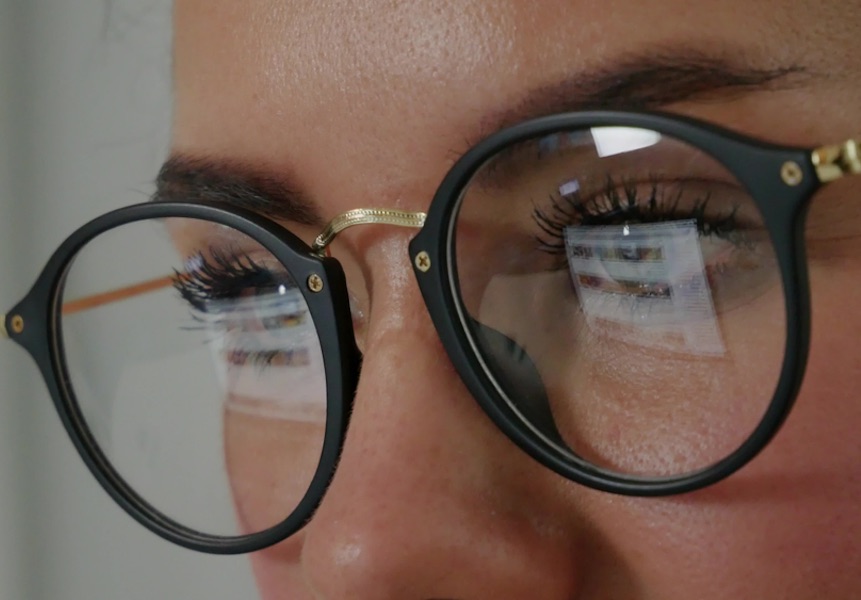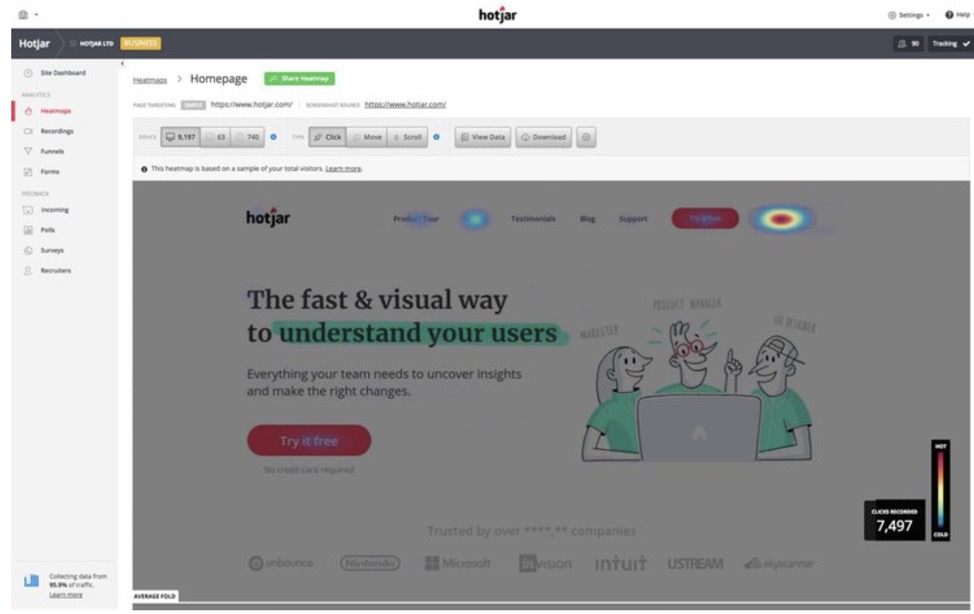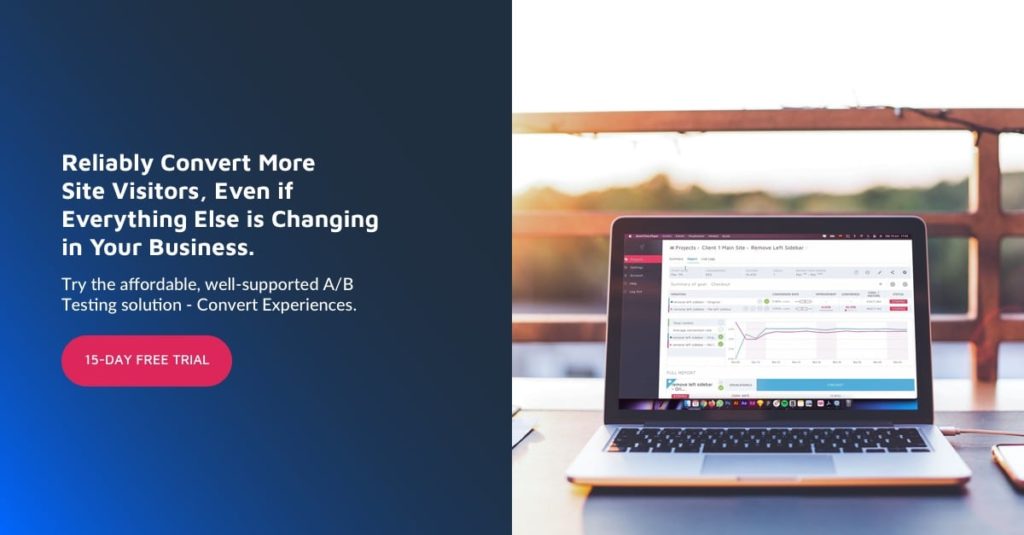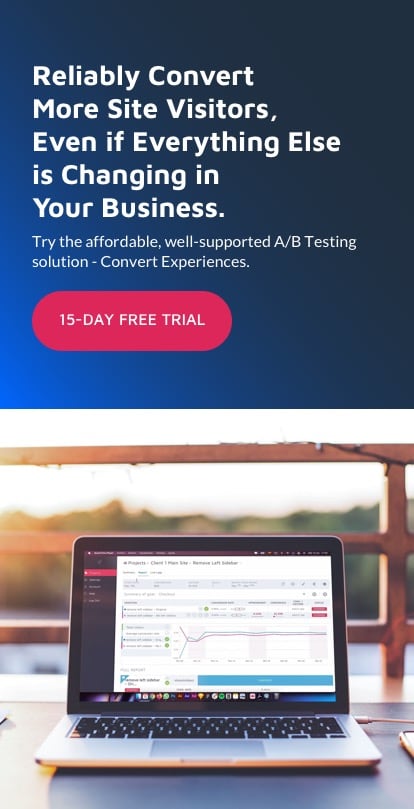Top 6 Ways You Can Conduct User Research to Gather Optimization Ideas

Part of creating effective optimization campaigns in any brand strategy is knowing just what to optimize. Marketers can easily make informed guesses and calculated assumptions based on insights and industry best practices, but there might be another way to get extremely valuable insights for your next optimization campaign: conducting user research.
User research is widely associated with user experience (UX) design, especially for helping reduce churn rates by delivering optimal experiences with a software product or service. But it also has its place for helping us come up with more ideas to test our product designs, website structure, and landing pages.
But jumping into user research requires knowing how to conduct said research in the first place.
User research methods can span from simple to complex. It’s not just about the tool you use, it’s how you use it and why you use it
Says Jamie Sheldon, owner of MyUKMailbox, a parcel forwarding service based in the UK.
And while there are several top user testing tools available out there, sometimes it’s important to go back to the basics of user testing, especially if you want to apply these to a marketing strategy.
So here are the top 6 user research methods to help you create new optimization ideas and get better conversions.
6 Tested User Research Methods (And When to Use Each)
1. Card Sorting
Card sorting is the simple test where you ask a group of test users to group your site’s information using a cart sort. The main benefit of this user research method is so you can easily make your site structure match the way users think. So you’re able to optimize your navigation, naming conventions, and site’s information architecture.
To conduct your own card sorting, gather a group of test users who aren’t well-acquainted with your site or product. Then ask them to sort different cards, each with specific names that correspond to different pages or subcategories in your site.
You can either ask them to sort the cards into groups and categories that make sense to them or ask them to sort the cards into prenamed categories you’ve already defined yourself.
Use the information and insights you gather to help you organize large amounts of content on your website, so you can improve your site’s overall flow and navigation.
Here’s one example of a successful card sorting exercise: Eurostar’s efforts to create a better sitewide experience for users that landed on their site. They successfully ran card sorting research with different groups of their customers—experienced travelers or business travelers—that enabled them to create a more streamlined site architecture. Together with their other marketing efforts that year, their revenue increased by 24% after the site redesign was implemented.
2. Usability Testing
Usability testing can help you identify any product issues or updates before you even apply or launch them to the rest of your consumers. It can be time-consuming to conduct this kind of research, but you only really need a solid group of about 5 test users to get started.
In usability testing, you can ask your test users to try and accomplish certain goals or tasks using your product—be it an app, a site, or anything you’ve built. You’ll have observers in real time taking notes about users’ experiences, including and especially any frustrations that might come up.
With usability testing as a main user research method, you’re able to identify users’ overall satisfaction with your product. Then, you’re able to determine how to improve that experience with actionable next steps.
Did you need to focus on better user experience writing because things were unclear? Did the order of steps seem illogical for users? Pay attention to everything your users do during the usability test, as this can point to key insights about how to improve your product.
For example, when Nielsen Norman Group decided to redesign their website, they conducted a usability test with a group of users. Using wireframes to test their initial hypotheses, they were able to garner helpful feedback that would later inform the rest of their redesign campaign. The test specifically showed them the impact of different imagery on consumers and also helped them create a better homepage for visitors.
Find more tips on writing stellar copy for a tailored user experience in our free webinar: Copy, Conversions & Your Customers’ Comfort Zone
3. In-Depth Interviews
Of course, interviews remain one of the best ways to conduct user research. This way, you’re able to get detailed information from users themselves about what they would want to be improved about your offer.
Put together a list of questions you’ll be asking during the interview, focusing on users’ thoughts and feelings while interacting with your product.
Your interviewees’ answers can help you get optimization ideas for customer journey maps, buyer personas, product benefits messaging, and even overall satisfaction with your product.
4. Eye-Tracking Studies
Eye tracking is an advanced user research method that tells researchers what users are looking at and for how long. This helps you observe how the eyes move and interact with a screen, so you can determine things like:
- Whether or not users are attracted to specific features
- Which designs are attention-grabbing (and which hold the attention more)
- How your navigation is designed
Eye-tracking studies may require you to create heatmaps so that you can track your users’ eyes when they interact with a page.

5. Online Surveys
Online surveys are a fantastic tool to reach a wider segment of your audience than you might be able to with interviews or focus groups. Surveys can help you gather feedback from your customers about your product or even other important materials like landing pages or opt-in forms.
You might have different surveys for different scenarios. For example, you might have a churn survey that helps you understand why a customer decided to opt out of your service or return your product. Or you can use regular feedback surveys to ask existing users what they’re enjoying and not enjoying, so you can make and communicate your offers even better.
6. A/B Testing
A/B testing is of course crucial to marketers and can be a simple user research method to use today. You can A/B test different variables to help you determine which ones convert best. You can test headlines, CTAs, colors, images, and more and then get results based on real user experiences.
You’ll be able to test just which elements of your product pages and sales pages are most appealing to users, enabling you to rinse and repeat the process in future pages or updates.
Read this case study about how Bluelambda used Convert to help their clients conduct better A/B tests and see significant ROI over the course of just a few tests.
User Research Best Practices
1. Set Your Benchmarks
When you begin your user research, be sure to set your benchmarks. These can be your hypothesis for each test, including what you think you know about your customer or user.
Set goals for your tests as well, including how many users to interview or survey, as well as the information you want to gather based on your chosen user research method.
2. Combine Quantitative and Qualitative Methods
It’s best to combine your quantitative and qualitative research methods to get the most benefit from each. You may also need different research methods for different use cases and goals.
With qualitative research methods—e.g. usability testing, in-depth interviews—you can answer questions about why or how to fix a problem. On the other hand, quantitative methods—e.g. online surveys—are great for answering questions about how many and how much.
3. Document the Process
Keep track of your tests and user research processes by documenting each step. This way, you’re able to repeat the process as needed or identify ways to improve it for next time. Even user research tactics require tweaks to improve so you’re always getting quality results, so keeping documentation about each can go a long way.
Key Takeaways
User research can be a fantastic way to get more optimization ideas for marketing campaigns. You’re able to glean more insightful information from users themselves, backing up your assumptions and guesses with actual data. Use this blog post to help you find the best user research methods for your business and start seeing those optimization ideas come in.



